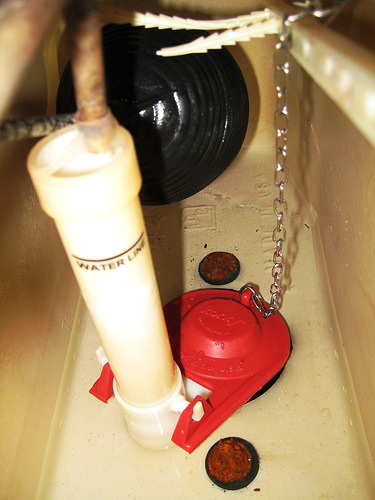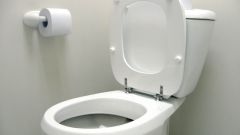Instruction
1
Clean water supply to the toilet tank. This should be done when water is not supplied to him. This may be a clogged shut-off valve or hose for supplying water. If the water is flowing, and the toilet tank is not filled, check valve or float. The latter can be skewed. Carefully install them in the correct position. In any type of toilet tank, the principle remains always the same. Its essence lies in the fact that clicking on the drain valve or lever, pear, closing the drain hole, ascends, and is drained. For occupancy and control of the water level in the tank "sees" the float which lifting, overlaps it at some point shut-off valve or falling open.
2
Clean water supply to the toilet tank. This should be done when water is not supplied to him. This may be a clogged shut-off valve or hose for supplying water. If the water is flowing, and the toilet tank is not filled, check valve or float. The latter can be skewed. Carefully install them in the correct position.
3
Replace the locking mechanism, rubber seals and rubber gaskets. This is the most common problem is the drain of the toilet tank, they gradually wear out and pass water. The result can be overflow of water over the edge, because the shut-off valve is unable to hold the water pressure. Replace shut-off valve. You can also replace it along with the float mechanism. Not forget to turn off the water in the riser. Disassemble shut-off valve and go to the plumbing supply store. Pick up your toilet tank model. The installation produced the same way as shot-off valve.
4
Replace the drain mechanism and the seals in the case when water flows into the toilet. This problem is considered to be common. Due to her on the toilet appear rusty streaks. Repair turn off the water. Will hitched the mounting bolts to the toilet. Replace the sealing gasket between the float mechanism and the reservoir.
5
Attach the muffler to the float valve (flexible plastic tube) in the case when the cistern is filled with noise. Install the muffler vertically above the water level in the reservoir at the entrance to the float valve. The lower part of the muffler will be submerged, whereby the water flow will begin to enter the toilet tank below the liquid surface. This will give the opportunity to avoid the loud fall of water and get rid of the additional noise effect of the float. You can also install a stabilizing float valve in the case where the muffler is not helping.

